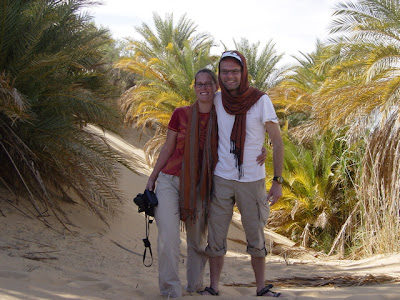At the end of the Pliocene (Tertiary) period, the Sahara had generally a warm and humid climate. But during the Quarternary period between 1,8 million and 10,000 years ago, there were five major ice ages and an equal number of intermediate periods. Some areas were savannah with trees and grasses, others steppe, depending on the dryness. Cold and humid periods interchanged and dryness became part of the Sahara area. Around 20,000 years ago, an intense dryness began, which would last for 10,000 years. This was a consequence of the last big ice age on earth, the Würm ice age.
From ±14,000 to 13,000 years ago it started to rain again occasionally, and the Sahara was getting greener. This was also the start of the Neolithic period, with the development of pottery, domestication of animals (starting with catching rather than killing wild animals) and agriculture (starting with grinding wild wheats). At this time, the Nile valley suffered from massive floodings. From ±10,000 year ago the wet period really started and the Sahara became inhabited once again (start of the Holocene). At that time it is generally 2 to 4 degrees colder than at present. The mountainous Gilf Kebir served as a giant water reservoir, and attracted people and animals to its valleys. The earliest rock art is from this period. Between 8,000-7,500 years ago there was relatively dry period, forcing people and animals to live close together and as a result the Cattle period began. The wet period lasted until 5,000 years ago, and the current extreme drought started at about 4,000 years ago, gradually ending the inhabitation of the Gilf Kebir valleys and most of the Sahara. This introduction was compiled from Vivian (2002), Bourseiller (2004), and Scott (2004).
References
Bourseiller, P., 2004. Sahara - de wereld van de woestijn. Uitgeverij Lannoo N.V., Tielt, 424p.
Scott, C., 2004. Sahara Overland - A route and planning guide. Trailblazer publications, Hindhead, 672p.
Vivian, C., 2002. The Western Desert of Egypt. The american University in Cairo Press. Cairo, 426p.
Subscribe to:
Post Comments (Atom)




No comments:
Post a Comment